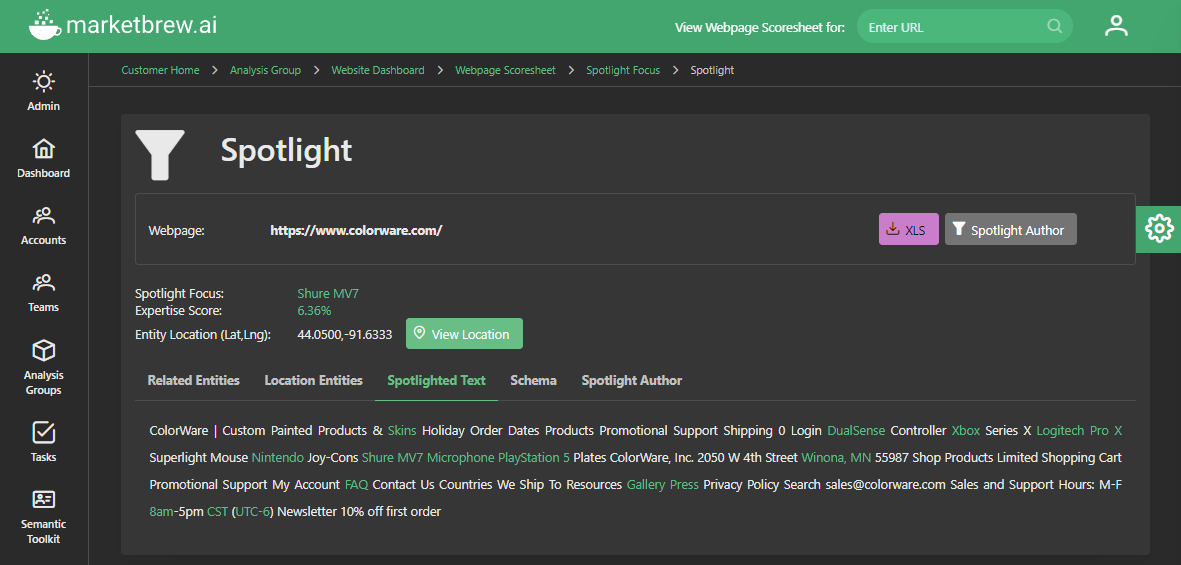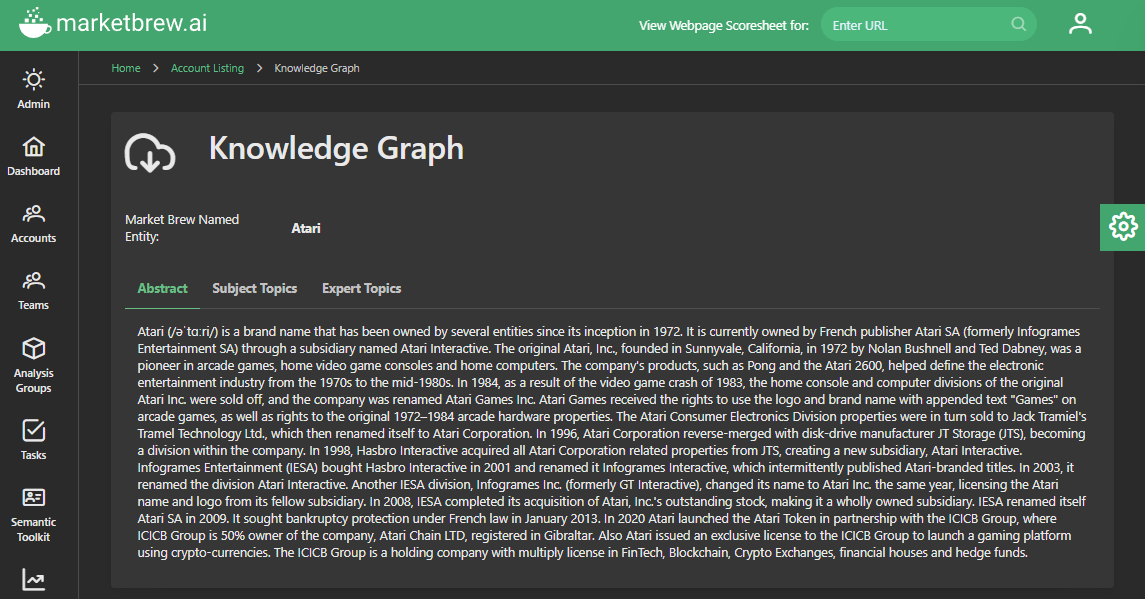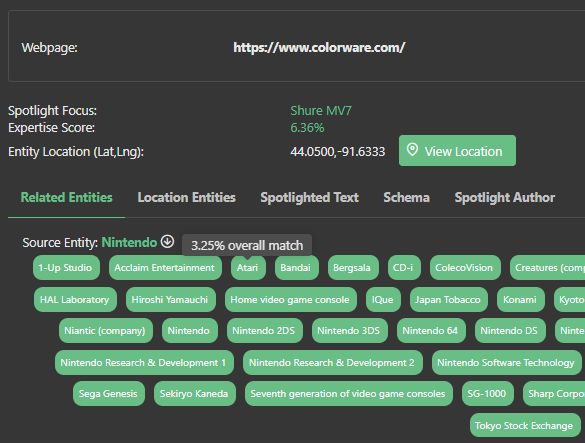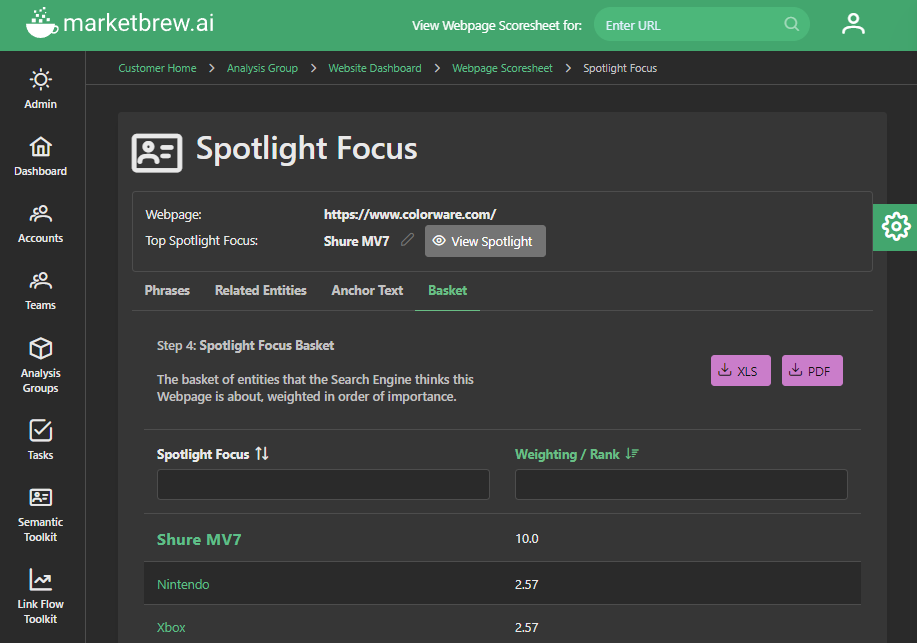Semantic SEO: The Future of Search Engine Optimization
Semantic SEO is a rapidly growing trend in the world of search engine optimization. It involves using semantic markup, natural language processing, and other techniques to improve the relevance and accuracy of search engine results.
This article will provide an in-depth overview of semantic SEO, including its benefits, challenges, and potential future developments.
In the early days of the internet, search engines were relatively simple. They relied on basic keyword matching algorithms to return results for a given query. However, as the internet has evolved, search engines have become increasingly sophisticated, and they now use a wide range of techniques to improve the relevance and accuracy of their results.
One of the most promising developments in this area is semantic SEO, which involves using semantic markup and natural language processing to improve the meaning and context of search engine results.
What is Semantic SEO?
At its core, semantic SEO is a set of techniques and strategies that aim to improve the relevance and accuracy of search engine results. This is done by using semantic markup such as word embeddings and natural language processing to better understand the meaning and context of the content on a given website. By doing so, search engines can return more relevant results for a given query, which can help improve the user experience and drive more traffic to websites that use semantic SEO techniques.
One of the key tools used in semantic SEO is schema markup. This is a type of code that is added to a website's HTML to provide additional information about the content on the site. For example, schema markup can be used to specify the type of content on a page (such as an article, a recipe, or a product), as well as its relevance to specific keywords or topics. This additional information can help search engines understand the context and meaning of the content on a given site, which can improve the relevance of the results they return.
In addition to schema markup, semantic SEO also involves using natural language processing techniques to better understand the content on a given website. This can involve using algorithms to analyze the text on a site and identify the key concepts and ideas it covers, as well as the relationships between these concepts. By doing so, search engines can better understand the meaning and context of the content on a given site, which can help them return more relevant results for a given query.
Overall, semantic SEO is a rapidly growing trend in the world of search engine optimization, and it offers a number of benefits over traditional keyword-based approaches.
Benefits of Semantic SEO
Overall, semantic SEO offers a number of benefits over traditional keyword-based approaches to search engine optimization. By using semantic markup and natural language processing to better understand the meaning and context of a website's content, it can help improve the relevance and accuracy of search engine results, enhance the user experience, and increase the visibility and rankings of a website.
There are several key benefits to using semantic SEO techniques, including:
- Improved search engine results: By using semantic markup and natural language processing to better understand the meaning and context of the content on a given website, search engines can return more relevant and accurate results for a given query. This can help improve the user experience and drive more traffic to websites that use semantic SEO techniques.
- Better user experience: Because semantic SEO helps search engines return more relevant results, it can also improve the user experience. For example, if someone searches for a specific product, semantic SEO can help ensure that they are shown the most relevant results, rather than a list of unrelated websites that happen to include the keyword they searched for.
- Increased website visibility: By improving the relevance and accuracy of search engine results, semantic SEO can also help increase the visibility of a website. For example, if a website uses semantic markup to specify that it covers a specific topic or product, it is more likely to be shown in the search results for that topic or product. This can help drive more traffic to the site and increase its overall visibility.
- Better search engine rankings: Because semantic SEO helps search engines return more relevant results, it can also improve a website's search engine rankings. For example, if a website uses semantic markup to specify that it covers a specific topic, it is more likely to be shown in the search results for that topic. This can help the site rank higher in the search results and improve its overall visibility.
- Enhanced content optimization: By using semantic markup and natural language processing, semantic SEO can help improve the optimization of a website's copywriting strategy. For example, it can help identify the key concepts and ideas covered on a site, as well as the relationships between these concepts. This can help improve the organization and structure of a website's content, making it more user-friendly and easier for search engines to understand.
Challenges and Limitations of Semantic SEO
Overall, while semantic SEO offers many benefits, it also comes with a number of challenges and limitations. These include its complexity, limited adoption, and changing algorithms. As a result, website owners need to carefully consider the pros and cons of semantic SEO before implementing it on their site.
While semantic SEO offers many benefits, it also comes with a number of challenges and limitations. These include:
- Complexity: Semantic SEO involves using a range of techniques and technologies, including semantic markup, natural language processing, and algorithms to analyze and understand the content on a website. This can make it a complex and challenging field, which can be difficult for some website owners to understand and implement.
- Limited adoption: While semantic SEO is a growing trend, it is still not widely adopted by website owners and search engines. This means that not all search engines are able to fully understand and use the semantic markup and natural language processing techniques used in semantic SEO, which can limit its effectiveness.
- Limited scope: Semantic SEO is primarily focused on improving the relevance and accuracy of search engine results. While this is an important goal, it is not the only factor that determines a website's success. For example, a website's design, user experience, and marketing efforts can also have a significant impact on its visibility and traffic. As a result, semantic SEO should be seen as one part of a broader search engine optimization strategy, rather than a standalone solution.
- Changing algorithms: Search engines are constantly updating and refining their algorithms to improve the relevance and accuracy of their results. This means that the techniques and strategies used in semantic SEO can become outdated over time, as search engines evolve and adapt to new technologies and trends. Website owners need to be aware of these changes and adapt their semantic SEO strategies accordingly.
Future Developments in Semantic SEO
Despite the challenges and limitations of semantic SEO, it is a rapidly growing field that is likely to continue to evolve and develop in the coming years.
Some of the key areas of future development in semantic SEO include:
- Improved adoption: As more website owners and search engines become aware of semantic SEO and its benefits, it is likely that its adoption will continue to grow. This could lead to more search engines using semantic markup and natural language processing techniques to improve the relevance and accuracy of their results.
- Enhanced functionality: As semantic SEO becomes more widely adopted, it is likely that the techniques and technologies used in this field will continue to evolve and improve. For example, new algorithms like Heading Vectors and other tools could be developed to better understand and analyze the content on a website, and to improve the relevance of the search results returned.
- Increased integration with other technologies: Semantic SEO is likely to become more closely integrated with other technologies, such as voice search, artificial intelligence, and machine learning. For example, semantic SEO techniques could be used to improve the accuracy of voice search results, or to enable search engines to understand more complex and nuanced queries.
- Greater focus on user experience: As semantic SEO becomes more widely adopted, it is likely that there will be an increased focus on using these techniques to improve the user experience. For example, semantic SEO could be used to personalize search results based on a user's location, interests, or previous search history, or to provide more detailed and relevant information about the content on a given website.
Overall, semantic SEO is a rapidly evolving field with a lot of potential for future development. As more website owners and search engines adopt these techniques, it is likely that we will see significant improvements in the relevance and accuracy of search engine results, as well as an increased focus on using semantic SEO to improve the user experience.
Despite the challenges and limitations of semantic SEO, it is a rapidly growing field that is likely to continue to evolve and develop in the coming years. Some of the key areas of future development in semantic SEO include:
How to Write Content Using Semantic SEO
In order to write content using semantic SEO, there are several key steps that need to be taken.
First and foremost, it is essential to research and understand the keywords and phrases that are relevant to the topic you are writing about. This will help to ensure that your content is optimized for search engines and will be more likely to rank highly in search results.
Once you have identified your keywords, you can begin to incorporate them naturally into your content. This means avoiding keyword stuffing, which is when a page is over-optimized with keywords and can actually hurt your search engine rankings. Instead, use your keywords in a way that flows naturally with the rest of your content.
Another important aspect of semantic SEO is the use of related keywords and phrases. These are words and phrases that are closely related to your main keywords, but may not necessarily be the exact same words. For example, if your main keyword is "dog training," some related keywords and phrases could be "canine behavior," "puppy training," and "dog obedience." By using related keywords and phrases, you can help search engines understand the context and meaning of your content.
Another key element of semantic SEO is the use of structured data. This is code that is added to your website to help search engines better understand the content on your page. For example, if you are writing a recipe, you can use structured data to add information such as the ingredients, cooking time, and number of servings. This helps search engines understand the content of your page and can improve your search engine rankings.
In addition to these technical elements, it is also important to focus on creating high-quality content that is informative, engaging, and relevant to your audience. This means writing in a clear and concise manner, using images and other visual elements to break up the text, and including links to other relevant resources. By providing value to your readers, you can improve your search engine rankings and increase traffic to your website.
Overall, writing content using semantic SEO involves a combination of keyword research, natural incorporation of keywords, the use of related keywords and phrases, structured data, and high-quality content. By following these steps, you can improve your search engine rankings and reach a wider audience.
How to Perform Keyword Research for Semantic SEO
Keyword research is a crucial step in the process of semantic SEO, as it helps to identify the terms and phrases that are most relevant and valuable to your target audience. By performing thorough and strategic keyword research, you can ensure that your content is optimized for search engines and effectively communicates your message to potential customers.
To perform keyword research for semantic SEO, follow these steps:
- Identify your target audience: Before you can conduct keyword research, you need to have a clear understanding of who your target audience is. Consider factors such as demographics, interests, and pain points to determine the types of keywords that will be most relevant and valuable to them.
- Develop a list of relevant keywords: Once you have a clear idea of your target audience, it's time to start brainstorming a list of relevant keywords. Start by thinking about the topics, products, and services that are most relevant to your business, and use tools such as Google's Keyword Planner and SEMrush to generate a list of potential keywords.
- Evaluate the competition: It's important to evaluate the competition for each of the keywords on your list to determine how difficult it will be to rank for them. Use tools such as Ahrefs and SEMrush to see how many other websites are competing for the same keywords, and prioritize those that have lower competition.
- Consider the search intent: When selecting keywords, it's important to consider the search intent of your target audience. Are they looking for information, comparison, or to make a purchase? This will help you determine the types of keywords that will be most effective in driving traffic to your website.
- Group similar keywords together: Once you have a list of potential keywords, group them into clusters based on their relevance and intent. This will help you to create more effective content that is optimized for multiple keywords and provides value to your target audience.
By performing thorough and strategic keyword research, you can ensure that your content is optimized for semantic SEO and effectively communicates your message to potential customers. By targeting the right keywords and considering the search intent of your audience, you can drive more traffic to your website and improve your search engine rankings.
Structured Data and Semantic SEO
Structured data refers to the organization of data in a way that is easily understandable by both humans and machines. This allows search engines to more easily understand the content of a website and provide more relevant and accurate search results.
One of the main ways in which structured data is used in SEO is through the use of schema markup. Schema is a standardized format for providing information about a page and its content. By adding schema markup to a website, a business can provide additional information about their products, services, and events. This can help search engines understand the context and relevance of a website's content, which can improve its visibility and ranking in search results.
Another way in which structured data can improve SEO is by allowing search engines to display rich snippets in the search results. Rich snippets are additional pieces of information that appear in the search results, such as star ratings, prices, and other relevant details. This can help a website stand out in the search results and improve its click-through rate, which can ultimately lead to more traffic and revenue for the business.
In addition to schema markup, there are several other types of structured data that can be used to improve SEO. For example, microdata is a set of standardized tags that can be added to a website's HTML to provide additional information about its content. This can include details such as the author of a blog post, the date it was published, and its categories and tags.
Another type of structured data is RDFa, which stands for "Resource Description Framework in attributes." This is a set of HTML attributes that can be added to a website's code to provide additional context and meaning to its content. This can help search engines understand the relationships between different pieces of information on a website, like it does with the many ontologies within its knowledge graph, and provide more accurate search results.
Overall, the use of structured data and semantic SEO can help businesses improve their visibility and ranking in search results. By providing additional information about their content, businesses can make it easier for search engines to understand the context and relevance of their website, which can ultimately lead to more traffic and revenue.
Natural Language Processing and Semantic SEO
Natural Language Processing (NLP) is a branch of artificial intelligence that focuses on the interaction between computers and human languages. It involves the analysis, interpretation, and generation of natural language data in order to enable machines to understand and communicate with humans.
One important application of NLP is in search engine optimization, specifically semantic SEO. Semantic SEO is a technique that uses NLP to understand the meaning and context of the content on a website in order to improve its search engine rankings.
Traditionally, search engines used keyword-based algorithms to rank websites. This meant that websites with a high number of keywords relevant to a particular search query would rank higher. However, this approach has limitations as it does not take into account the context or meaning of the content.
In contrast, semantic SEO uses NLP to understand the meaning and context of the content on a website. This allows search engines to provide more relevant search results to users. For example, if a user searches for "best Italian restaurants in New York City," a semantic SEO algorithm would understand that the search query is about Italian restaurants in New York City, and would rank websites that are about Italian restaurants in New York City higher.
To implement semantic SEO, websites need to use structured data, such as schema.org, to provide additional information about the content on their website. This allows search engines to better understand the context and meaning of the content.
Additionally, semantic SEO algorithms can use machine learning techniques to improve their understanding of natural language over time. By analyzing a large amount of data, these algorithms can learn to better understand the nuances and complexities of human language, and provide more accurate and relevant search results.
In conclusion, Natural Language Processing and semantic SEO are important tools for improving the relevance and accuracy of search engine results. By using NLP to understand the meaning and context of content, search engines can provide more relevant and useful search results to users.
Named Entity Extraction for Semantic SEO
Named entity extraction is a crucial aspect of semantic SEO, as it involves identifying and extracting important entities such as people, organizations, and locations from a piece of text. This information can then be used to improve the search engine ranking and relevance of a website, as well as to provide a more comprehensive understanding of the content.
One of the main benefits of named entity extraction is that it allows search engines to better understand the context and meaning of a webpage. By extracting named entities, search engines can determine the topic cluster and key themes of a page, and use this information to improve the ranking and relevance of the page in search results. This can be particularly useful for websites that cover a wide range of topics, as it allows the search engine to accurately categorize the content and provide more relevant search results to users.
In addition to improving search engine ranking, named entity extraction can also be used to provide a more comprehensive understanding of the content on a website. By extracting entities such as people, organizations, and locations, search engines can provide users with more detailed information about the content of a page. For example, if a website is discussing a specific person, the named entity extraction process can identify the person's name and provide additional information such as their profession, location, and any other relevant details.
Furthermore, named entity extraction can also be used to improve the accuracy of search results by disambiguating entities that may have multiple meanings. For example, if a webpage is discussing the city of Paris, the named entity extraction process can identify that the term "Paris" refers to the city in France, rather than the person Paris Hilton or the mythological character Paris of Troy. This can help search engines provide more accurate and relevant search results to users.
In summary, named entity extraction is a crucial aspect of semantic SEO, as it allows search engines to better understand the context and meaning of a webpage. By extracting named entities, search engines can improve the ranking and relevance of a page, provide more detailed information about the content, and improve the accuracy of search results. This can ultimately lead to a better user experience and increased traffic to a website.
Semantic SEO in Market Brew
Market Brew search engine models utilize four distinct semantic SEO algorithms that correlate with search engine rankings.
Semantic algorithms inside of search engines have evolved over time in an arc:
tf-idf -> keywords -> entities -> embeddings
One of the key entity tools that the company uses to accomplish this is DBPedia Spotlight, which is an open source tool that allows users to annotate text with linked data from DBPedia, a community-driven project that extracts structured information from Wikipedia.

Market Brew uses DBPedia Spotlight to identify and extract relevant entities from a client's website and link them to DBPedia's knowledge base. This process, known as entity linking, helps to improve the semantic relevance of the website and makes it easier for search engines to understand the content and context of the site.
Once the entities have been extracted and linked, Market Brew uses SPARQL, a query language for RDF (Resource Description Framework) data, to retrieve additional information about the entities from DBPedia and Wikidata. SPARQL allows the company to easily access a wealth of structured data about the entities and use it to enhance the semantic relevance of the website.

For example, if a client's website is about a specific type of car, Market Brew can use SPARQL to retrieve information about the car's make, model, year, and other relevant details from DBPedia and Wikidata. This information can then be used to create more detailed and accurate metadata for the website, which can help to improve its search engine rankings.

In addition to using DBPedia Spotlight and SPARQL to improve the semantic relevance of a website, Market Brew also uses these tools to perform other tasks that are essential for semantic SEO.
For instance, the company can use DBPedia Spotlight to identify and extract entities from a client's competitors' websites and use SPARQL to retrieve information about those entities.
This can help Market Brew to understand the strengths and weaknesses of the competitors' websites and develop strategies to outrank them in search engine results.

In addition to entity algorithms, Market Brew also accurately models AI Overviews, by using Sentence-BERT embeddings. It does this in its AI Overviews Visualizer tool.
Overall, Market Brew's use of DBPedia Spotlight, SPARQL, Wikidata, Sentence-BERT and embeddings, helps to improve the search engine rankings of its users' websites by making the content more semantically relevant and easier for search engines to understand.
By using these tools, the company is able to emulate modern semantic algorithms that it can then check for correlation against the search engine rankings pages (SERPs).
You may also like
Guides & Videos
SEO Internal Linking Detailed Guide
Guides & Videos
Impact of BERT on SEO Ranking Factors
Guides & Videos


